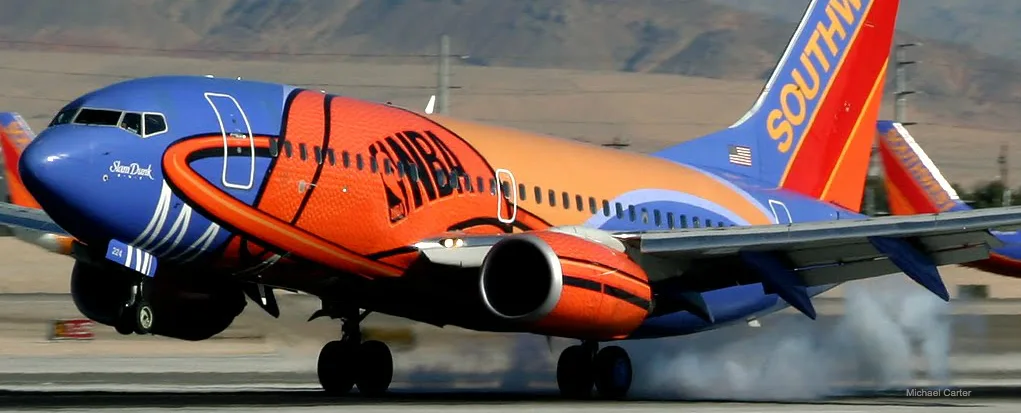Topics
- Article
Effects of Travel Shaping Future of NBA

For the past several years, the NBA has experimented with scheduling one or two games each season in London and Mexico City. One of the goals of the “NBA Global Games” is to gauge whether or not expanding the league internationally is a realistic possibility.
A flight to Mexico City isn’t much different than many others within the continental United States, but the trip to London crosses 5-8 time zones, depending on where a team is coming from. Largely for this reason, league commissioner Adam Silver recently proclaimed that Europe is not a viable option in terms of possible international expansion.
Silver addressed the topic at the Sloan Sports Analytics conference earlier this month, saying the NBA is looking closely at Mexico City “because it is very reachable.” He added that advances in sleep science and a better understanding of the effects of travel will prevent the league from considering expanding overseas in the near future:
Adam Silver cites rest and logistics as a reason why #NBA teams in Europe are unlikely any time soon.
— SiriusXM NBA Radio (@SiriusXMNBA) November 17, 2016
Given the current state of the NBA, it comes as no surprise that travel issues are the league’s primary concern when considering potential growth.
Star players missing games to rest is becoming a bigger and bigger issue, as evidenced by last week’s heavily promoted showdown between the Warriors and Spurs in San Antonio. The nationally televised contest featuring the NBA’s two best teams quickly transformed into a complete dud, as Steph Curry, Kevin Durant, Klay Thompson, Draymond Green, Andre Iguodala, Kawhi Leonard, LaMarcus Aldridge and Tony Parker were all sidelined.
Warriors coach Steve Kerr made the decision to sit many of his players in response to Golden State’s recent travel schedule. Via ESPN’s Tom Haberstroh, Kerr said:
“It’s truly insane. This is the worst stretch of schedule that I’ve ever been a part of and I’ve been in the league since 1988. I’ve never seen anything like this, eight games in eight cities with 11,000 miles.”
From February 27 through March 11, the Warriors played in Philadelphia, Washington, Chicago, New York, Atlanta, Oakland, Minneapolis and San Antonio. The final five games of that stretch took place in a span of just seven days.
While choosing to hold his top players out of action for the marquee matchup against the Spurs could be viewed as a sign of protest from Kerr, he was also quick not to fault the commissioner. Per Haberstroh, Kerr added “What I really respect about Adam Silver is he’s been really proactive about trying to deal with this issue. He’s all ears when we talk to him.”
Last month, Silver echoed a similar sentiment at his All-Star Game press conference. Via Chris Fedor of Cleveland.com, Silver stated:
“I do recognize that there isn’t an easy solution to that problem … [we] have to be realistic that the science has gotten to the point where there is that direct correlation that we’re aware of between fatigue and injuries. And as tough as it is on our fans to miss one of their favorite players for a game, it’s far better than having them get injured and be out for long periods of time. So we’re always still looking to strike that right balance.”
There’s no doubt that travel and time zone changes have a negative impact on athletes’ performance. As Silver suggested, there isn’t an obvious answer either. However, the first step to combatting fatigue from travel may simply be player awareness. From a Haberstroh ESPN piece on the measures taken by some Los Angeles Clippers:
“After a win in Charlotte, [Blake] Griffin got dressed and strapped on a WHOOP at his locker. Griffin hasn’t been wearing it in games because he’s unsure whether it’s allowed or not. Nonetheless, the Whoop strap has been particularly insightful on the road, showing his sleep duration and sleep quality in hotel rooms across America — and even giving recommendations on what time to get to bed for optimal recovery. ‘The big thing for me is the sleep planner,’ Griffin said. ‘It gives you the extra confidence that you’re rested and ready.’”
By closely monitoring their Strain, Sleep and Recovery, players can better prepare themselves for the rigorous demands of the NBA schedule.
RELATED:The NFL’s London ConundrumWHOOP // MLB Performance Study – Part 1: Effects of Travel